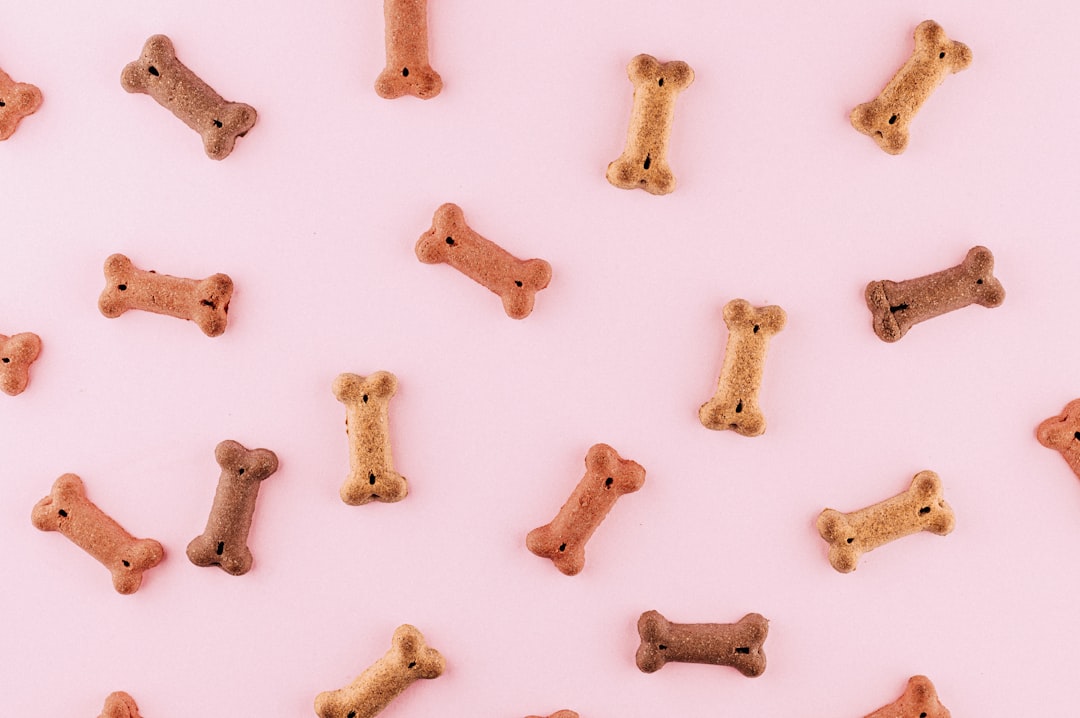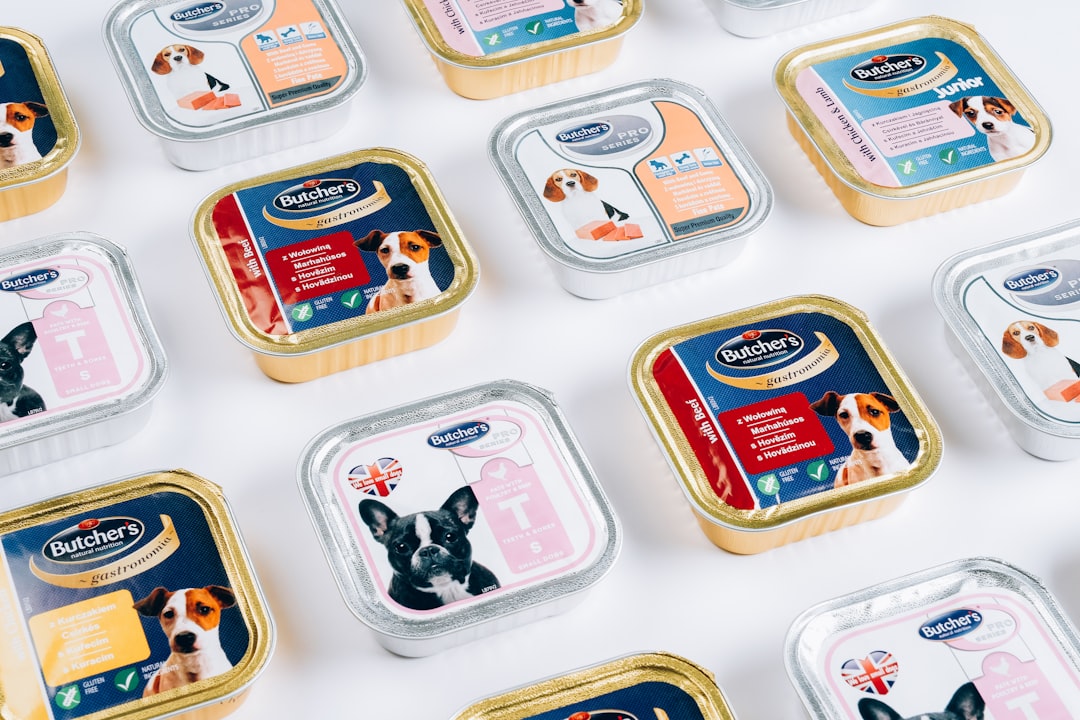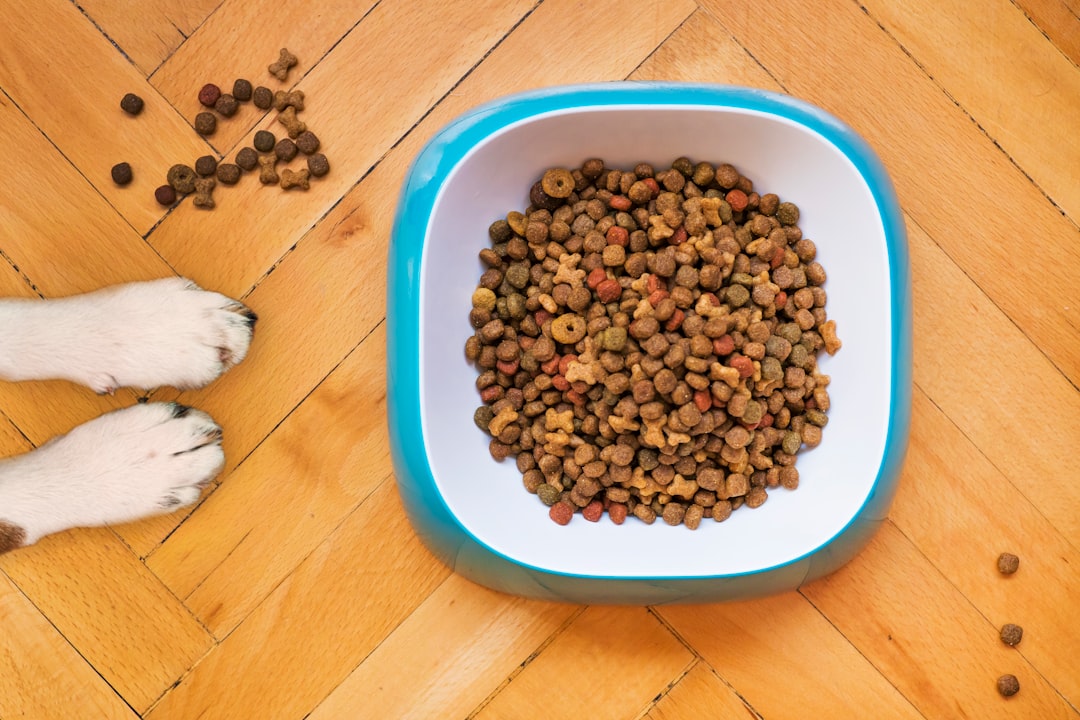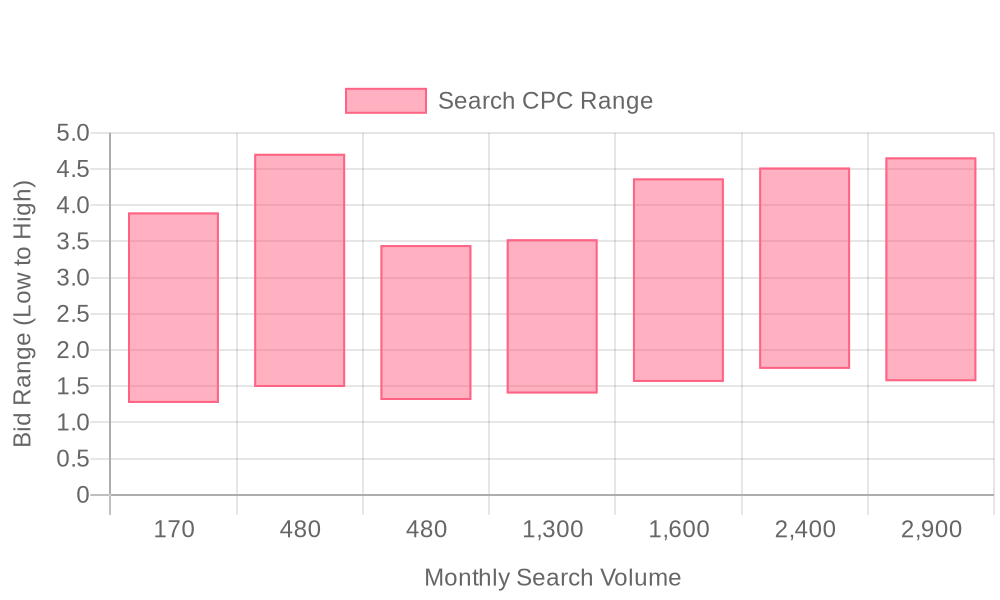
Supercharge your lead generation with a FREE Google Ads audit - no strings attached! See how you can generate more and higher quality leads
Get My Free Google Ads AuditFree consultation

No commitment
Supercharge your lead generation with a FREE LinkedIn Ads audit - no strings attached! See how you can generate more and higher quality leads
Get My Free Google Ads AuditFree consultation

No commitment
Supercharge your lead generation with a FREE Meta Ads audit - no strings attached! See how you can generate more and higher quality leads
Get My Free Google Ads AuditGet My Free LinkedIn Ads AuditGet My Free Meta Ads AuditFree consultation

No commitment
Supercharge your lead generation with a FREE Google Ads audit - no strings attached! See how you can generate more and higher quality leads
Get My Free Google Ads AuditFree consultation

No commitment
In today's competitive pet food market, leveraging both online and offline marketing channels is crucial for wholesale pet food businesses striving to maximize their reach and sales potential. Google Ads emerges as a pivotal component in this landscape, effectively bridging the gap between general brand awareness and direct sales opportunities by capturing high-intent buyers actively seeking solutions. For wholesale pet foods, Google Ads provides the capability to connect with decision-makers, track ROI from click to purchase, and integrate seamlessly with broader marketing ecosystems. Through precision targeting strategies, businesses can intercept potential buyers right when they are most likely to convert, ultimately fostering growth in the competitive sphere of pet food wholesale advertising. However, challenges such as missing high-value prospects and lack of visibility into anonymous traffic can impede success. Addressing these issues is critical to executing successful campaigns.
B2B marketers in the wholesale pet food sector face unique challenges: high-value prospects often slip through the cracks, and standard CRM systems rarely capture the full breadth of interested buyers. An integrated, data-driven approach—powered by Sona Identification—ensures that your paid search strategy identifies and nurtures every potential lead along the buyer journey.
Precise keyword targeting, dynamic audience segmentation, and advanced conversion tracking allow you to reach wholesale buyers actively searching for pet products. For detailed campaign setup and optimization strategies, explore this guide to Google Ads for pet product businesses. Ready to see how seamless lead capture can be? Get started for free with Sona.

Wholesale pet foods operate in a market defined by complex supply chains, fluctuating demand, and highly specialized buyer segments. Google Ads delivers direct access to decision-makers—pet food retailers and distributors—precisely when they initiate their discovery and procurement process, ensuring that high-value opportunities are intercepted before competitors can engage.
The ability to capture purchasing intent from anonymous visitors is critical, especially given the high margins and large order volumes common in wholesale pet food distribution. With advanced visitor identification and intent signals, marketers can pinpoint which companies are browsing, dynamically segment these prospects, and increase visibility into previously untracked leads. This approach ensures that no qualified opportunity remains invisible or unpursued, maximizing both lead quality and revenue potential.
Instant response to market trends is essential in wholesale pet food, where seasonality and product launches can rapidly shift demand. Google Ads enables real-time campaign adjustments, allowing brands to craft messaging that resonates during peak buying windows and respond to emerging needs. When integrated with unified data analysis, these efforts create closed feedback loops—refining ad targeting, message relevance, and channel allocation based on actual performance, not guesswork.
Expanding into new and emerging markets is a challenge for any B2B supplier. Google Ads allows wholesale pet food providers to reach untapped regions and growth segments with precision, reducing the wasted effort of broad, unfocused outreach. By syncing enriched CRM audiences into Google Ads, marketers can ensure their campaigns are always aligned with the latest account data, optimizing spend and reach for maximum impact across all stages of the sales funnel. If you want to see how data-driven targeting can accelerate your growth, get started for free with Sona.


Growth in the wholesale pet food sector depends on precise targeting and intelligent market expansion, especially as competition intensifies and product variety grows. Success hinges on surfacing untapped demand, optimizing channel investment, and making every marketing touchpoint accountable for revenue impact.
Ready to unlock new growth channels? Get started for free with Sona.

Audience segmentation for wholesale pet foods directly impacts campaign precision and marketing ROI. Strategic segmentation ensures each campaign message reaches the right buyer, aligning sales efforts with actual market demand. Learn more about account-based marketing strategies that can help refine your targeting in B2B pet food distribution.
Successful segmentation begins with clearly defined audience groups based on meaningful characteristics. For wholesale pet foods, this means grouping prospects by product type—such as organic blends, grain-free lines, or specialty diets—and by business size or distribution volume. These distinctions matter: buyers for boutique pet stores differ from large-scale distributors, and their purchase triggers are not the same. Companies that use advanced audience segmentation avoid wasted ad spend by focusing only on high-fit accounts, maximizing reach among those most likely to convert.
When data platforms identify website visitors and attribute them to specific business profiles, marketers can create even more granular segments. Instead of targeting generic traffic, teams can pinpoint pet supply retailers, independent stores, or regional distributors, then tailor outreach based on segment-specific needs. This level of detail prevents broad, ineffective outreach and ensures every dollar is spent amplifying relevant offers.
Overlaying buying intent signals transforms passive segmentation into an actionable pipeline-builder. By monitoring signals such as frequent visits to bulk ordering pages, downloads of distribution guides, or direct inquiries about new product lines, marketers can surface high-value prospects in real time. These intent signals allow teams to prioritize accounts showing active buying behavior, even when the leads remain anonymous.
Platforms that enrich segmentation with live behavioral data empower marketers to immediately shift budget toward in-market companies. This ensures messaging and offers reach buyers who are actively researching wholesale suppliers, closing the gap between interest and conversion. For practical strategies on leveraging paid ads in this space, explore these best practices for pet product ads. Dynamic segmentation, fed by fresh intent signals, means audience lists automatically update as prospects progress through the funnel—enabling campaign agility and maximizing lift from pet food marketing strategies.
Once audience segments are established and intent signals overlaid, the next step is to build targeted ad groups for each segment. Each group receives messaging tailored to its specific needs, such as volume discounts for distributors or exclusive blends for boutique retailers. Budgets are set based on the segment’s potential value, ensuring investment aligns with likely return.
Modern platforms allow seamless syncing of enriched audiences directly into Google Ads. This enables marketers to build segment-specific ad groups that reflect CRM insights and real-time web activity. By dynamically updating audiences and aligning budgets with current intent, teams increase the efficiency of Google Shopping ads for pet products.
Accurate conversion tracking is essential for proving campaign impact and identifying revenue opportunities. Wholesale pet food marketers must confirm that every form fill, quote request, and offline deal is attributed to the correct audience segment. Smooth CRM integration ensures that leads from Google Ads and other channels flow directly into sales pipelines, ready for immediate follow-up.
Advanced tracking platforms close the loop by connecting online engagements to offline conversions, offering a unified view of performance across the funnel. This prevents form abandonment from eroding campaign value and enables marketers to recapture reality from anonymous traffic—ensuring no high-fit lead is left behind. Integrated attribution systems also make it possible to optimize future pet food wholesale advertising by highlighting the segments and channels driving the highest ROI. To streamline your segmentation and tracking, get started for free with Sona.

| Industry | Keyword | Monthly Search Volume | Competition Level | Low Bid | High Bid |
| Wholesale Pet Foods | wholesale pet foods | 170 | MEDIUM | 1.27 | 3.9 |
| Wholesale Pet Foods | wholesale dog treats | 480 | HIGH | 1.49 | 4.71 |
| Wholesale Pet Foods | wholesale dog food by the pallet | 480 | HIGH | 1.31 | 3.45 |
| Wholesale Pet Foods | wholesale dog food | 1300 | HIGH | 1.4 | 3.53 |
| Wholesale Pet Foods | bulk cat food | 1600 | HIGH | 1.56 | 4.37 |
| Wholesale Pet Foods | bulk wet cat food | 2400 | HIGH | 1.74 | 4.52 |
| Wholesale Pet Foods | bulk dog food | 2900 | HIGH | 1.57 | 4.66 |
A high-impact paid media strategy in the wholesale pet foods sector depends on more than just generous budgets: precision in keyword targeting is essential. The right selection of keywords ensures your ads reach procurement managers, retail buyers, and distributors actively researching new vendors or products, delivering qualified traffic that converts. For a deeper look at how paid ads drive results in this niche, explore these best practices for pet products marketing.
Google’s Keyword Planner provides insights into search volume, competitiveness, and seasonal trends. Data-driven teams can use these tools to avoid missed high-value opportunities and prioritize spend on terms that align with buyer intent. When these keyword lists are enriched by real-time behavioral data and unified account intelligence, marketers gain the ability to dynamically update keyword priorities and shift budget to segments where in-market activity signals a higher probability of conversion. Through this unified approach, B2B revenue teams in wholesale pet foods can continually refine campaigns, ensuring every ad dollar targets the most promising buyers and verticals. To put these strategies into action, get started for free with Sona.

Executing a high-ROI Google Ads campaign in the wholesale pet foods space requires precision, actionable data, and audience-centric alignment. The following framework ensures every aspect of your campaign—from keyword research to post-click optimization—delivers measurable value and supports your go-to-market goals.
For deeper insights into retargeting strategies that keep high-value wholesale pet food buyers engaged throughout their journey, explore advanced techniques for dynamic audience segmentation and tailored remarketing. To experience these capabilities firsthand, get started for free with Sona.
Expanding a wholesale pet foods business demands targeted strategies that build trust, deliver value, and capture the attention of high-fit B2B buyers. Modern decision-makers in this sector look for transparency, credibility, and clear differentiation in a crowded marketplace. Explore our comprehensive guide to account-based marketing for actionable strategies that help your brand stand out.
Success in wholesale pet foods hinges on data-driven targeting, ongoing optimization, and tight integration between digital campaigns and sales strategy. Segmenting audiences, refining keyword lists, and maintaining high-quality creative assets are crucial for capturing prime buyers. Integrating real-time intent signals and advanced attribution enables teams to shift budgets toward accounts most likely to convert, ensuring no valuable lead goes unnoticed. This unified approach transforms traditional pet food marketing strategies into a connected system that drives both immediate results and sustainable growth. Ready to streamline your wholesale growth? Get started for free with Sona.
Navigating the world of Google Ads for wholesale pet foods can be a transformative journey for your business. By leveraging targeted advertising strategies, you can boost your visibility and connect with the right buyers in this competitive market. We've explored how understanding your audience, optimizing keywords, and crafting compelling ad copy are essential steps in achieving sales success for your pet food products.
Throughout this article, we discussed the core challenges of marketing wholesale pet foods, such as reaching potential buyers and standing out in a crowded digital landscape. We highlighted key strategies like audience segmentation, strategic bidding, and conversion tracking to maximize your ad campaigns' effectiveness. By implementing these practices, you can significantly increase your reach and sales potential.
Imagine the possibilities when your Google Ads are finely tuned to capture the interest of buyers actively searching for wholesale pet foods. With the right approach, you can not only drive sales but also build long-lasting relationships with your customers. Embrace these strategies with confidence and watch as your business transforms into a recognized leader in the pet food industry.
To truly harness the power of data-driven marketing, we invite you to start for free and experience our platform's capabilities firsthand. Unlock the potential of your advertising efforts and take your business to new heights today.
To set up Google Ads for your wholesale pet food business, you should focus on precise keyword targeting, dynamic audience segmentation, and advanced conversion tracking to reach wholesale buyers actively searching for pet products.
Best practices include using search campaigns to intercept high-intent buyers, leveraging display ads for brand visibility, utilizing video ads for product education, implementing remarketing strategies, and using ad extensions to build trust and engagement.
Google Shopping ads for pet food products can be optimized by creating targeted ad groups based on audience segments, using enriched CRM data, and ensuring campaign alignment with buyer intent and lifecycle stages.
The article does not specify an exact conversion rate for Google Ads in the wholesale pet food market, but it emphasizes the importance of precision targeting and data-driven optimization to maximize conversions.
To optimize your campaign, focus on precise keyword targeting, dynamic audience segmentation, real-time campaign adjustments, and integrating offline and online data for a holistic view of effectiveness and conversion paths.
Join results-focused teams combining Sona Platform automation with advanced Google Ads strategies to scale lead generation

Connect your existing CRM

Free Account Enrichment

No setup fees
No commitment required

Free consultation

Get a custom Google Ads roadmap for your business
Join results-focused teams combining Sona Platform automation with advanced Meta Ads strategies to scale lead generation

Connect your existing CRM

Free Account Enrichment

No setup fees
No commitment required

Free consultation

Get a custom Google Ads roadmap for your business
Join results-focused teams combining Sona Platform automation with advanced LinkedIn Ads strategies to scale lead generation

Connect your existing CRM

Free Account Enrichment

No setup fees
No commitment required

Free consultation

Get a custom Google Ads roadmap for your business
Join results-focused teams using Sona Platform automation to activate unified sales and marketing data, maximize ROI on marketing investments, and drive measurable growth

Connect your existing CRM

Free Account Enrichment

No setup fees
No commitment required

Free consultation

Get a custom Google Ads roadmap for your business
Over 500+ auto detailing businesses trust our platform to grow their revenue
Join results-focused teams using Sona Platform automation to activate unified sales and marketing data, maximize ROI on marketing investments, and drive measurable growth

Connect your existing CRM

Free Account Enrichment

No setup fees
No commitment required

Free consultation

Get a custom Google Ads roadmap for your business
Over 500+ auto detailing businesses trust our platform to grow their revenue
Join results-focused teams using Sona Platform automation to activate unified sales and marketing data, maximize ROI on marketing investments, and drive measurable growth

Connect your existing CRM

Free Account Enrichment

No setup fees
No commitment required

Free consultation

Get a custom Google Ads roadmap for your business
Over 500+ auto detailing businesses trust our platform to grow their revenue
Our team of experts can implement your Google Ads campaigns, then show you how Sona helps you manage exceptional campaign performance and sales.
Schedule your FREE 15-minute strategy sessionOur team of experts can implement your Meta Ads campaigns, then show you how Sona helps you manage exceptional campaign performance and sales.
Schedule your FREE 15-minute strategy sessionOur team of experts can implement your LinkedIn Ads campaigns, then show you how Sona helps you manage exceptional campaign performance and sales.
Schedule your FREE 15-minute strategy sessionOur team of experts can help improve your demand generation strategy, and can show you how advanced attribution and data activation can help you realize more opportunities and improve sales performance.
Schedule your FREE 30-minute strategy sessionOur team of experts can help improve your demand generation strategy, and can show you how advanced attribution and data activation can help you realize more opportunities and improve sales performance.
Schedule your FREE 30-minute strategy sessionOur team of experts can help improve your demand generation strategy, and can show you how advanced attribution and data activation can help you realize more opportunities and improve sales performance.
Schedule your FREE 30-minute strategy sessionOur team of experts can help improve your demand generation strategy, and can show you how advanced attribution and data activation can help you realize more opportunities and improve sales performance.
Schedule your FREE 30-minute strategy session





Launch campaigns that generate qualified leads in 30 days or less.
